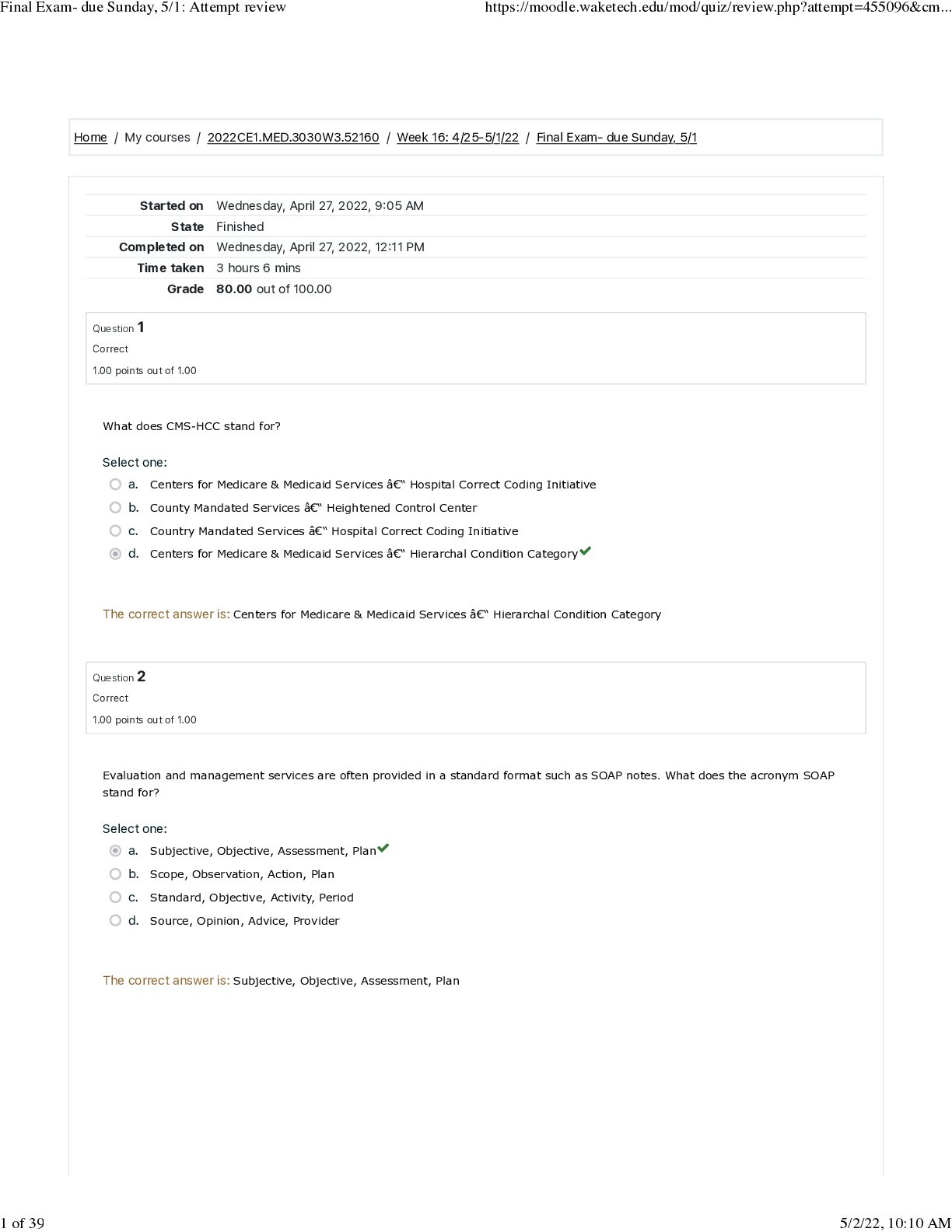*NURSING > EXAM > NURS 6665 Final Exam Questions And Answers 2023-2024( Complete Solution Rated A Answers) (All)
NURS 6665 Final Exam Questions And Answers 2023-2024( Complete Solution Rated A Answers)
Document Content and Description Below
Question 1 The Confusion Assessment Methods Instrument (CAMI) is a standardized assessment tool for which of the following disorders? A . Dementia B . Delirium C . Pick’s disease D . A and C Questio... n 2 Which of the following is a common sensory deficit of conversion disorder? Check all that apply. A . Blindness B . Tunnel vision C . Blindness D . Deafness Question 3 Delirium is an example of which type of clinical problem in psychosomatic medicine? A . Psychiatric symptoms secondary to a medical condition B . Psychiatric symptoms as a reaction to a medical condition of treatment C . Psychiatric complications of medical conditions and treatment D . Medical complications of psychiatric conditions or treatment Question 4 All the following medications are used in the treatment of Parkinson’s disease dementia/psychosis EXCEPT for A . Nuplazid B . Rivastigmi ne C . Pimavanser in D . Memantine Question 5 Indicators of imitative dissociative identity disorder include which of the following symptoms? A . Symptom exaggeration B . Confusion and shame related to symptoms C . Use of symptoms to excuse antisocial behaviors D . A and C only Question 6 Which of the following can lower a person’s resistance to control impulses? A . Fatigue B . Incessant stimulation C . Psychic trauma D . All of the above Question 7 Schizophrenia in a patient with end-stage renal disease is an example of which type of clinical problem in psychosomatic medicine? A . Co-occurring medical and psychiatric conditions B . Psychiatric symptoms secondary to a medical condition C . Psychiatric symptoms as a reaction to a medical condition D . Psychiatric complications of medical conditions and treatments Question 8 An acute onset, short-term confusion, with changes in cognition and level of awareness due to a physiological cause is known as which of the following? A . Delirium B . Dementia C . Psychosis D . Traumatic brain injury Question 9 A patient expresses feelings of unreality or of being detached from their environment, describing the perception of the outside world as unreal, dreamlike, and visually distorted. The ARNP recognizes this as which of the following? A . Derealization B . Depersonalization C . Generalized amnesia D . Dissociative identity disorder Question 10 A patient presents with persistent feelings of detachment from one’s self, like watching one’s self in a movie. The ARNP recognizes this as which of the following? A . Derealization B . Depersonalization C . Generalized amnesia D Dissociative identity . disorder Question 11 Which of the following is recommended in the treatment of pyromania? A . Psychoanalysis B . Cognitive therapy C . Supervision of patient to prevent a repeated episode of fire setting D . All the above Question 12 Which of the following biological factors have been associated with kleptomania? Check all that apply. A . Brain diseases B . Cortical atrophy C . Mental retardation D . Enlarged lateral ventricles Question 13 A neurodevelopmental disorder characterized by impairment confined to a specific area of academic achievement (i.e., reading, writing, arithmetic, spelling) without deficits in intellectual and adaptive behaviors is A . Intellectual disability B . Communication disorder C . Specific learning disorder D . Autism spectrum disorder Question 14 Which of the following approaches/treatments are recommended in working with patients with a conversion disorder? A . After a very thorough evaluation to r/o any medical cause, tell the patient that the symptoms are imaginary. B . Recommend psychotherapy to focus on issues of stress and coping. C . Recommend psychoanalysis to explore intrapsychic conflicts. D . B and C only Question 15 Experiences of depersonalization and derealization are common in which of the following patients? A . Patients with seizures B . Patients with migraines C . Patients who use marijuana D . All of the above Question 16 Under hypnosis or during psychotherapy, a patient may recover a memory of a painful experience that is etiologically significant. This is known as which of the following? A . False memory syndrome B . Recalled memory syndrome C . Dissociative trance disorder D . Recovered identity disorder Question 17 Which of the following is recommended as a first line therapy for a patient with dementia and behavioral disturbance? A Valproic acid . (Depakote) B . Risperdal C . Haloperidol D . None of the above Question 18 According to the DSM-5, delirium is specified as acute or persistent. Which of the following time frames is consistent with acute delirium specification? A . A few hours or days B . Three weeks or less C . One month or less D . Less than 3 months Question 19 Which of the following is true about impulses? Check all that apply. A . Impulses are acted upon with the expectation of receiving pleasure B . Impulses are usually ego-dystonic. C . Impulsive behaviors are characterized by their repetitive nature. D . The repeated acting out of impulses leads to psychological impairment. Question 20 MRI findings in patients with intermittent explosive disorder may reveal changes to which area of the brain that is associated with loss of impulse control? A . Cerebellum B . Prefrontal cortex C Temporal lobe . D . Parietal lobe Question 21 Patients with kleptomania have a high lifetime comorbidity of which of the following disorders? A . Mood disorders B . Schizophrenia C . Dissociative disorders D . All of the above Question 22 The epidemiology related to kleptomania includes which of the following? A . Kleptomania is more prevalent in males than females. B . Kleptomania is estimated to be about 10 percent in the general population. C . Kleptomania is reported to occur in fewer than 5 percent of identified shoplifters. D . All of the above Question 23 An increase in depersonalization is seen with the depletion of which of the following? A . GABA B . Serotonin C . L-tryptophan D . Norepinephri ne Question 24 Depression secondary to interferon treatments represents which of the following clinical problems in psychosomatic medicine? A . Psychiatric complications of medical conditions and treatments. B . Psychiatric symptoms secondary to a medical condition. C . Psychological factors precipitating medical symptoms. D . Psychiatric symptoms as a reaction to medical condition or treatments. Question 25 The ARNP is meeting with a person who reports a fascination with fire, along with recurrent deliberate and purposeful setting of fires. The ARNP realizes that these behaviors are consistent with which of the following disorders? A . Pyromania B . Obsessive-compulsive disorder C . Intermittent explosive disorder D . Pyrophobia Question 26 Which of the following is not consistent with what is known about depersonalization and derealization? A . They are the third most commonly reported psychiatric symptom. B . Derealization is two to four times more often in men than in women. C . One survey found a one-year prevalence of 19 percent in the general population. D . Transient experiences of depersonalization and derealization are extremely common in normal and clinical populations. Question 27 Which of the following are included in the clinical features of anxiety illness disorder? Check all that apply. A . Persons maintain they have a particular disease or as time progresses their belief may transfer to another disease. B . Lab results, lack of progression of the disease, and appropriate reassurances from the provider are helpful treatments for the person with the disease. C . Preoccupation with illness may or may not interfere with their interaction with family, friends, and co-workers. D . They are often addicted to internet search about their feared illness, inferring the worst from the information. Question 28 The ARNP in working with a parent of a 6-month-old would offer which of the following in anticipatory guidance? A . Give baby much attention. B . Attune to baby’s needs for hunger, fatigue, diaper change. C . Provide supervised time for crawling, sitting, and rolling. D . All the above Question 29 The symptom of giving approximate answers is known as which of the following? A . Alogia B . Paralogi a C . Analogi a D . Symlogi a Question 30 Identifying developmental milestones is an important skill set for ARNPs for which of the following reasons? A . Often developmental milestones go unrecognized until a child is much older. B . Knowing when a significant variation in development has occurred improves diagnostic accuracy. C The sooner a significant developmental impairment is identified and addressed, the . better the long-term outcomes could be for patients. D . All of the above. Question 31 Which of the following can cause delirium? Check all that apply. A . Polypharmacy B . Sleep deprivation C . Admission/transfer/discharge from a healthcare facility D . None of the above Question 32 A patient who has been raped, presents with the inability to recall important personal information and any information about the rape, does recall events prior and since. There does not appear to be any physiological reason for this. This presentation is consistent with which of the following diagnoses? A . Dissociative amnesia B . Dissociative amnesia with dissociative fugue C . Localized dissociative amnesia D . Generalized dissociative amnesia Question 33 A term use to describe a neurodevelopmental disorder characterized by impairments in reciprocal social communication and a tendency to engage in repetitive stereotyped patterns of behaviors, interests and activities is A . Intellectual disability B . Specific learning disorder C . Autism spectrum disorder (ASD) D . Attention deficit/hyperactivity disorder (ADHD) Question 34 Acute withdrawal from alcohol represents which type of clinical problem in psychosomatic medicine? A . Medical complications of psychiatric conditions or treatments B . Psychiatric complications of medical conditions and treatments C . Psychiatric symptoms as a reaction to medical treatments. D . Co-occurring medical and psychiatric conditions. Question 35 A dissociative disorder described as an identity disturbance due to prolonged and intense coercive persuasion is known as which of the following? A . Brainwashing B . Ganser syndrome C . Imitative dissociation identity disorder D . Factitious dissociative identity disorder Question 36 Discrete episodes of losing control of aggressive impulses grossly out of proportion to any stressors, which can result in serious assault tor destruction of property are symptoms consistent with which of the following disorders? A . Conduct disorder B . Anti-social personality disorder C . Borderline personality disorder D . Intermittent explosive disord Question 37 Epidemiology data suggests which of the following with respect to illness anxiety disorder? A . Illness anxiety disorder is more common in men than in women. B . Illness anxiety disorder is seen more frequently in persons with higher education. C . Surveys indicate that up to 15 percent of the general population worry about becoming sick and incapacitated as a result. D . Illness anxiety disorder is more common among caucasians than among other races. Question 38 Which of the following treatments is NOT recommended in treating Dissociative Identity Disorder? A . Cognitive Therapy B . Hypnosis C . Antidepressants D . Group Psychotherapy Question 39 A person reveals to the ARNP that they steal to get the things they want and cannot afford. The person says they just can’t help themselves, because they have kleptomania. The ARNP realizes the following: A . This presentation is consistent with kleptomania. B . This presentation is not consistent with kleptomania because a person with kleptomania does not realize they have kleptomania. C . The person likely does not have kleptomania because a person with kleptomania is more concerned with the act of stealing rather than the obtaining the object which has been stolen. D . The presentation is consistent with kleptomania because the person is stealing things they need. Question 40 A subcortical dementia with parenchymal abnormalities which can be visualized on MRI is known as which of the following? A . HIV dementia B Kluver-Bucy syndrome . C . Alzheimer’s type dementia D . Creutzfeldt-Jakob disease Question 41 Predisposing factors for delirium include which of the following? Check all that apply. A . Dementia B . History of falls C . Age 65 and olde D . Sensory impairment Question 42 Which of the following diagnostic instruments for Autism Spectrum Disorder is recommended for universal clinical practice? A . Autism Diagnostic Interview -Revised (ADI – R) B . Diagnostic Interview for Social and Communication Disorder (DISCO) C . Development, Dimensional and Diagnostic Interview D . None of the above Question 43 A capacity evaluation prior to an organ transplantation is an example of which of the following clinical problems in psychosomatic medicine? A . Psychiatric symptoms secondary to a medical condition B . Medical complications of psychiatric treatments C . Psychological factors precipitating medical conditions D Psychiatric/psychosocial assessment . Question 44 A temporary marked alteration in the state of consciousness or by the customary sense of personal identity without the replacement by an alternate sense of identity is known as which of the following? A . Ganser Syndrome B . Dissociative Trance Disorder C . Dissociative Identity Disorder D . Factitious Dissociative Identity Disorder Question 45 Which of the following is consistent with current literature about the relationship between obstetrical complications and Autism Spectrum Disorders (ASD)? A . Research is unclear whether obstetric complications are a true risk factor for ASD. B . Research proves there is a negative correlation between obstetrical complications and ASD. C . Research proves there is a positive correlation between obstetrical complications and ASD. D . Research strongly supports a positive relationship between obstetric complications and ASD. Question 46 A major neurocognitive disorder with severe impairment in memory, judgment, orientation, and cognition is known as which of the following? A . Deliriu m B . Dement ia C . Psychos is D . Amnesi a Question 47 Difficulty with immediate memory is attributed to impairment in which of the following regions of the brain? Select all that apply. A . Broca B . Wernick e C . Occipita l D . Tempor al Question 48 Which of the following would not be included in the treatment plan for a patient with illness anxiety disorder? A . Behavioral therapy B . Group psychotherapy C . Insight oriented psychotherapy D . Exploratory invasive procedures to obtain diagnosis Question 49 Which of the following would demonstrate the normal achievement of gross motor developmental milestone for a 6-month-old? A . Pulls to stand B . Transfers items hand to hand C . Briefly sits alone: pivots in prone D . Feeds self crackers; stares at new faces. Question 50 A process by which repressed material is brought back to consciousness and the person relives the repressed material accompanied ty the appropriate affective response. A Abulia . B . Abreactio n C . Adynamia D . Alexithym ia Question 51 The term psychosomatic literally refers to which of the following? A . Imaginary illness B . Psychiatric illness C . How the mind effects the body D . How the body effects the mind Question 52 Which of the following is consistent with normal range gross motor developmental milestones for a 4 year old? A . Walks down stairs, jumps backwards B . Balances on one foot for 4 seconds, can broad jump 1 foot C . Writes part of name; copies a square. D . Eats independently, unbuttons items Question 53 Which of the following speech and language skills are consistent with normal developmental milestones of a 3-year-old? A . Uses three-word sentences; names body parts. B . Uses two-word sentences; understands me and you C . Follows three-step request; tells stories D . Responds to “why?”; likes rhyming words Question 54 Which the following medications is used to treat irritability in autism? A . fluoxetine B . aripiprazo le C . alprazola m D . guanfacin e Question 55 A congenital neurodevelopmental disorder primarily occurring in females, characterized by specific deficits following a period of normal function growth and development is A . PANDAS B . Rett syndrome C . Reye’s syndrome D . Kluver-Bucy syndrome Question 56 Which of the following are included in the five different milestone skill areas that should be evaluated? A . Social/emotional skills B . Gross/fine motor skills C . Speech and language skills D . All the above Question 57 Recognizable skills or abilities that have an expected range and order of appearance such as a child taking his first step around the time of his first birthday is known as which of the following? A . Life skills B . Motor development C . Developmental history D . Developmental milestones Question 58 A condition characterized by the person giving approximate answers, with clouding of consciousness, frequently accompanied by hallucinations or other dissociative, somatoform or conversion symptoms is A . Ganser Syndrome B . Schizophrenia C . Dissociative trance disorder D . Dissociative identity disorder Question 59 Somatoform disorders represent which type of clinical problem in psychosomatic Medicine? A . Co-occurring medical and psychiatric conditions. B . Psychiatric complications of medical conditions and treatments. C . Psychiatric symptoms secondary to a medical condition. D . Psychological factors precipitating medical symptoms. Question 60 Which is NOT consistent with what is known about Ganser syndrome? A . Three of Ganser’s first four cases were convicts. B . Cases have been reported in a variety of cultures. C . Women outnumber men by approximately 2 to 1. D . It is considered by some to be an indicator of potential malingering. Question 61 The second-most common type of dementia caused by cardiovascular and cerebrovascular disease with progressive cognitive decline in stepwise fashion is known as which of the following? A . Pick’s disease B . HIV dementia C . Vascular dementia D . Lewy-body dementia Question 62 Deficits in attention and the ability to complete multi-step commands are associated with impairment in which of the following regions of the brain? A . Frontal B . Prefrontal C . Cingulate gyrus D . All the above Question 63 A person erroneously believes they sustained an emotional or physical trauma in early life is known as which of the following? A . Ganser syndrome B . False memory syndrome C . Factitious dissociative identity disorder D . Imitative dissociative identity disorder Question 64 Persons who continually use the internet to play games to the extent that it interferes with social relations and work performance are exhibiting symptoms most specifically consistent with which of the following conditions? A . Obsessive gaming disorder B . Internet gaming disorder C . Internet use D . Internet abuse Question 65 A new diagnosis in the DSM-5 characterized by persons preoccupied with being sick or developing a disease of some kind is known as which of the following? A . Conversion disorder B . Illness anxiety disorder C . Somatic symptom disorder D . Functional neurological symptom disorder Question 66 A subcortical dementia characterized by motor abnormalities including psychomotor slowing, choreoathetoid movements, executive dysfunction complicated by impaired language, memory, and insight later in the disease process is A . Vascular dementia B . Huntington’s disease C . Creutzfeldt-Jakob disease D . Alzheimer’s type dementia Question 67 Which of the following is a common visceral symptom of conversion disorder? A . Seizures B . Diarrhea C . Paralysis D . Mid-line anesthesia Question 68 The ARNP is working with the family of a patient with Alzheimer’s Disease who keeps stating the family is plotting against her, trying to have her “snuffed out.” The family is distraught because they state they are doing their best to make sure their family member is safe. The ARNP explains which of the following in educating the patient about the patient’s A . The patient is hallucinating. An estimated 20–30 percent of patient with dementia have hallucinations. B . The patient is delusional. An estimated 30–40 percent of patients with dementia have delusions. C . The patient likely has valid concerns and adult protective services needs to be called. D . Disturbance in perception is common in patients with Alzheimer’s Disease and patient needs to be hospitalized immediately. Question 69 Which of the following questions would be important when differentiating pyromania from schizophrenia? A . Was the fire set in response to a delusion or hallucination? B . Was the fire set deliberately, not a failure to resist an impulse? C . Was the fire set as an act of sabotage? D . Was the fire set with a failure to appreciate the consequences of the act? Question 70 The ARNP notices that a patient with a conversion disorder unable to walk has an inappropriately cavalier attitude toward what seems to be a major impairment and recognizes this an associated psychological symptom known as which of the following? A . Identification B . Primary gain C . Secondary gain D . La belle indifference Question 71 The ARNP recognizes which of the following when the 2-month-old opens her mouth when she sees a bottle. A . The 2-month-old must be quite advanced as this is a visual motor skill normally seen in a 4 month old. B . The 2-month-old is demonstrating a normal developmental adaptive skill. C . The 2-month-old is demonstrating a normal developmental visual motor skill. D . The 2-month-old is demonstrating an advanced developmental gross motor skill. Question 72 Neuropsychiatric testing is defined as which of the following? A . A comprehensive mental status exam B . A neurological evaluation of brain function C . Standardized quantitative reproducible evaluation of a patient’s cognitive abilities. D . A non-invasive test of brain function which analyzes electrical rhythms in the brain Question 73 Deficits in language including naming, repetition, reading and comprehension, and writing is NOT associated with impairment in which of the following regions of the brain? A Broca . B . Wernicke C . Right parietal D . Left temporal Question 74 A sudden unexpected purposeful travel away from home with inability to recall all of one’s past accompanied by confusion about personal identity not due to direct effects of a substance or a general medical condition which causes clinically significant distress or impairment in social, occupational, or other important areas of functioning is most specifically known as which of the following? A . Dissociative fugue B . Dissociative amnesia C . Posttraumatic amnesia D . Systematized amnesia Question 75 Visual hallucinations are associated with impairment in which of the following regions of the brain? A . Occipital B . Temporal C . Left parietal D . Frontal, prefrontal Question 76 The principal theoretician to bring psyche and soma together was which of the following? A . Sigmund Freud B Anna Freud . C . Karl Abraham D . Georg Groddeck Question 77 Which of the following medications are FDA-approved medications for the treatment of delirium? A . Donepezil B . Galantamine C . Rivastigmine D . None of the above Question 78 Anxiety related to chemotherapy is an example of which type of clinical problem in psychosomatic medicine? A . Psychological factors precipitating medical symptoms B . Psychiatric symptoms as a reaction to a medical condition or treatment C . Co-occurring medical and psychiatric conditions D . Psychiatric complications of medical conditions and treatments Question 79 A type of delirium characterized by cycling through psychomotor agitation and retardation, from apathy to hypervigilance is known as which of the following? A . Mixed delirium B . Bipolar delirium C . Hyperactive delirium D . A and B Question 80 A tension state that can exist without an action is known as which of the following? A . An obsession B . A compulsion C . An impulse D . Ego dystonic Question 81 Which of the following is true regarding how intermittent explosive disorder is differentiated from antisocial or borderline personality disorder? A . In personality disorders, the aggressiveness and impulsivity are mild. B . In personality disorders, the person is much less aware of the symptoms. C . In personality disorders, functioning is less likely to be affected. D . In personality disorders, aggressiveness and impulsivity is part of the person’s character and is present between outbursts. Question 82 A tension state that always has an action component is known as which of the following? A . An impulse B . An obsession C . A compulsion D . Acting out Question 83 A cognitive assessment should include which of the following? A . Baseline cognitive functioning B . Changes from baseline functioning C . Speed of onset of cognitive changes D . All of the above Question 84 The ARNP evaluates a 4-year-old who cannot balance on one foot for 3 seconds, cannot copy a circle and realizes which of the following? A . This is normal for a 4-year-old. B . This is a developmental red flag for a 4-year-old that should trigger a specialized assessment. C . This is a developmental red flag for a 5-year-old so do nothing at this point. D . This is a minor concern, the APRN advises to enroll the child in gymnastics for balance and an art class to learn to draw better. Question 85 Which of the following adaptive skills are consist with normal range developmental milestone of an 18-month-old? A . Bite, chews cookie; looks for fallen item B . Finger feeds items; takes off a hat. C . Gets onto a chair; removes garment D . Opens doorknobs; pulls off pants. Question 86 A disorder characterized by the presence of two or more distinct identities which differ from each other in that each presents as having its own pattern of perceiving, relating to, and thinking about the environment and self. A . Dissociative Identity Disorder B . Imitative Dissociative Identity Disorder C . Factitious Dissociative Identity Disorder D . Malingered Dissociative Identity Disorder Question 87 Interest in fires and deliberate setting of fires for financial gain is known as which of the following? A . Arson B . Pyromania C . Intermittent explosive disorder D . Impulse control disorder Question 88 Which of the following conversion disorder symptoms are associated with a good prognosis? A . Tremors and aphonia B . Tremors and seizures C . Paralysis and seizures D . Paralysis and blindness Question 89 A type of delirium characterized by psychomotor retardation and apathy is known as which of the following? A . Mixed delirium B . Medical delirium C . Hypoactive delirium D . Hyperactive delirium Question 90 Which of the following symptoms assist in differentiating a seizure from a pseudoseizure? A . Tongue biting is typically not present in a pseudoseizure B . Urinary incontinence is typically not present in a pseudoseizure C . Injuries from falling are typically not present in a pseudoseizure D . All the above Question 91 Which of the following questions are recommended to assess sexual identity in a male adolescent? A . Do you have or have you had a girlfriend? B . Do you have or have you had a boyfriend? C . Do you have, or have you had romantic feelings toward anyone? D . A and C only Question 92 Which of the following demographics are consistent with autism spectrum disorder (ASD) A . Female to male ratio (4:1) B . Onset of symptoms by age 3 C . Affects 1 in 100 children D . All the above Question 93 The diagnosis formerly known as multiple personality disorder is now known as which of the following? A . Dissociative fugue B . Dissociative identity disorder C . Factitious dissociative identity disorder D . None of the above Question 94 Which of the following is NOT consistent with what is known about intermittent explosive disorder across the lifespan? A . Intermittent explosive disorder may appear at any stage of life. B . Intermittent explosive disorder usually appears between late adolescence and early adulthood. C . Intermittent explosive disorder typically increases in severity with the onset of middle age. D . The onset of intermittent explosive disorder may be acute or insidious Question 95 Functional neurological symptoms disorder is also known as which of the following? A . Conversion disorder B . Somatization disorder C . Factitious disorder D . A and C Question 96 Which of the following would be a developmental trigger for a 3-year-old? Check all that apply. A . Cannot balance on one foot for 3 seconds, cannot copy a circle B . Lack of imaginative plan; cannot hypothesize an other’s thought C . Cannot use a three-word sentence; speech only 50% understandable D . Speech less than 75% understandable; cannot identify self or details in pictures Question 97 Which of the following questions would be important when differentiating pyromania from conduct disorder or antisocial personality disorder? Check all that apply. A . Was the fire set in response to a delusion or hallucination? B . Was the fire set deliberately, not a failure to resist an impulse? C . Was the fire set as an act of sabotage? D . Was the fire set with a failure to appreciate the consequences of the act? Question 98 The therapeutic approach that has the best chance of success for the person with intermittent explosive disorder is which of the following? A . Psychotherapy only B . Psychopharmacology only C . A combined psychotherapy/psychopharmacology approach D . Family therapy only Question 99 Which of the following are common disorders that must be differentiated from dissociative identity disorder? Check all that apply. A . Perimenstrual disorders B . Posttraumatic stress disorder C . Obsessive-compulsive disorder D B and C only . Question 100 Which of the following is an example of a medical complication of psychiatric conditions or treatment? A . Dementia B . Neuroleptic Malignant syndrome C . Depression related to limb amputation D . Recurrence of depressive disorder in setting of cancer treatment [Show More]
Last updated: 11 months ago
Preview 1 out of 24 pages
.png)
Reviews( 0 )
Document information
Connected school, study & course
About the document
Uploaded On
Feb 08, 2023
Number of pages
24
Written in
Additional information
This document has been written for:
Uploaded
Feb 08, 2023
Downloads
0
Views
51


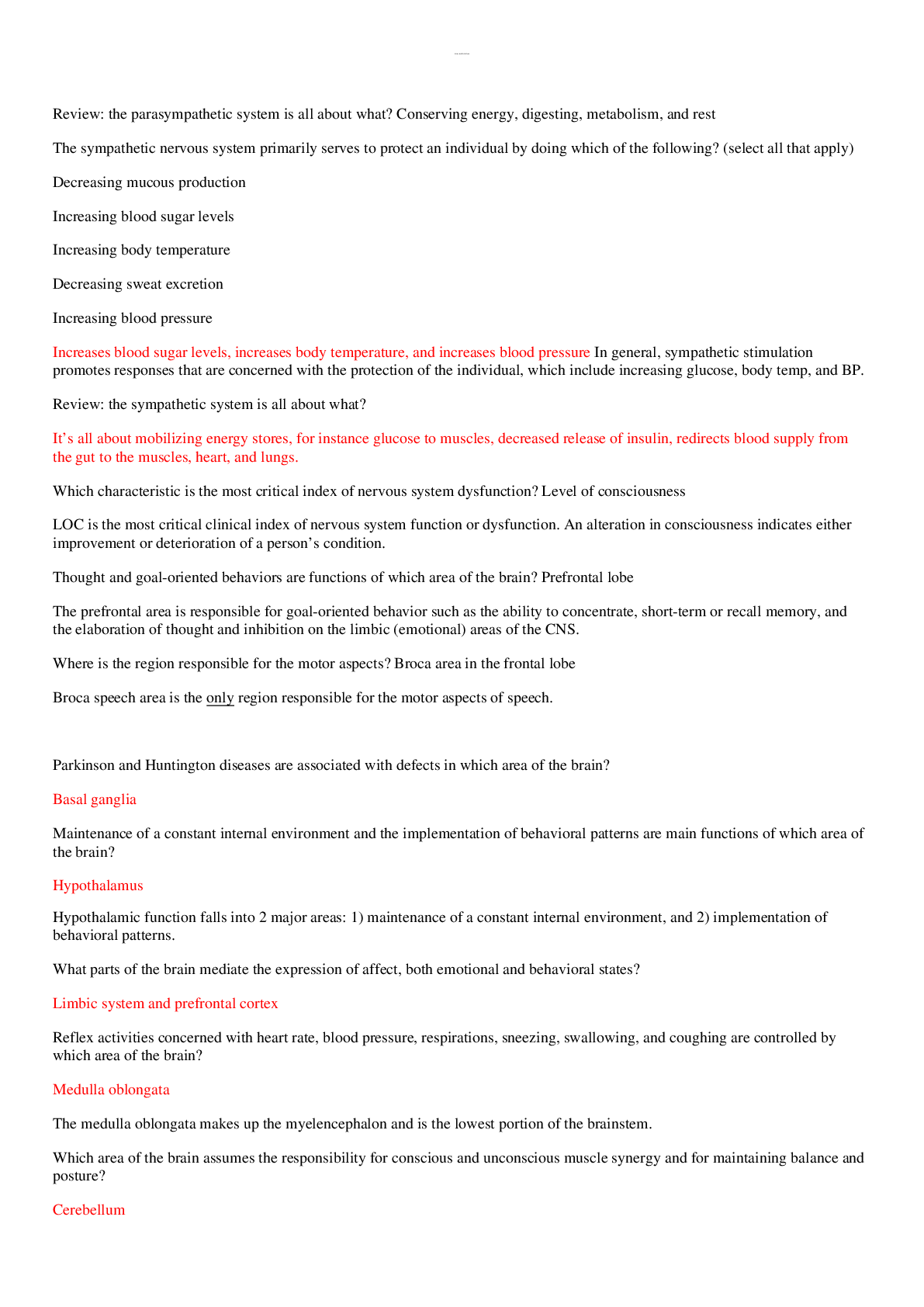

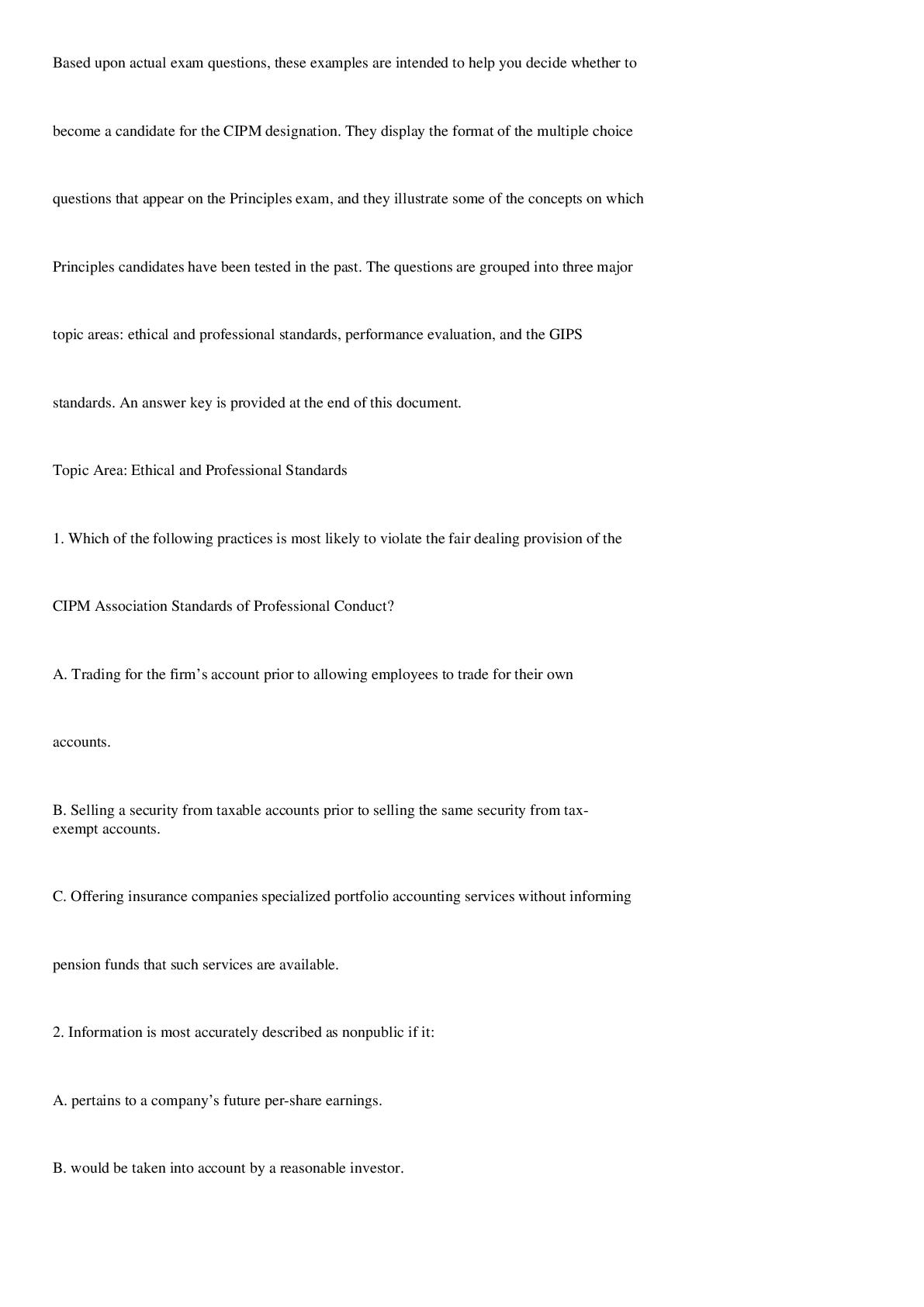
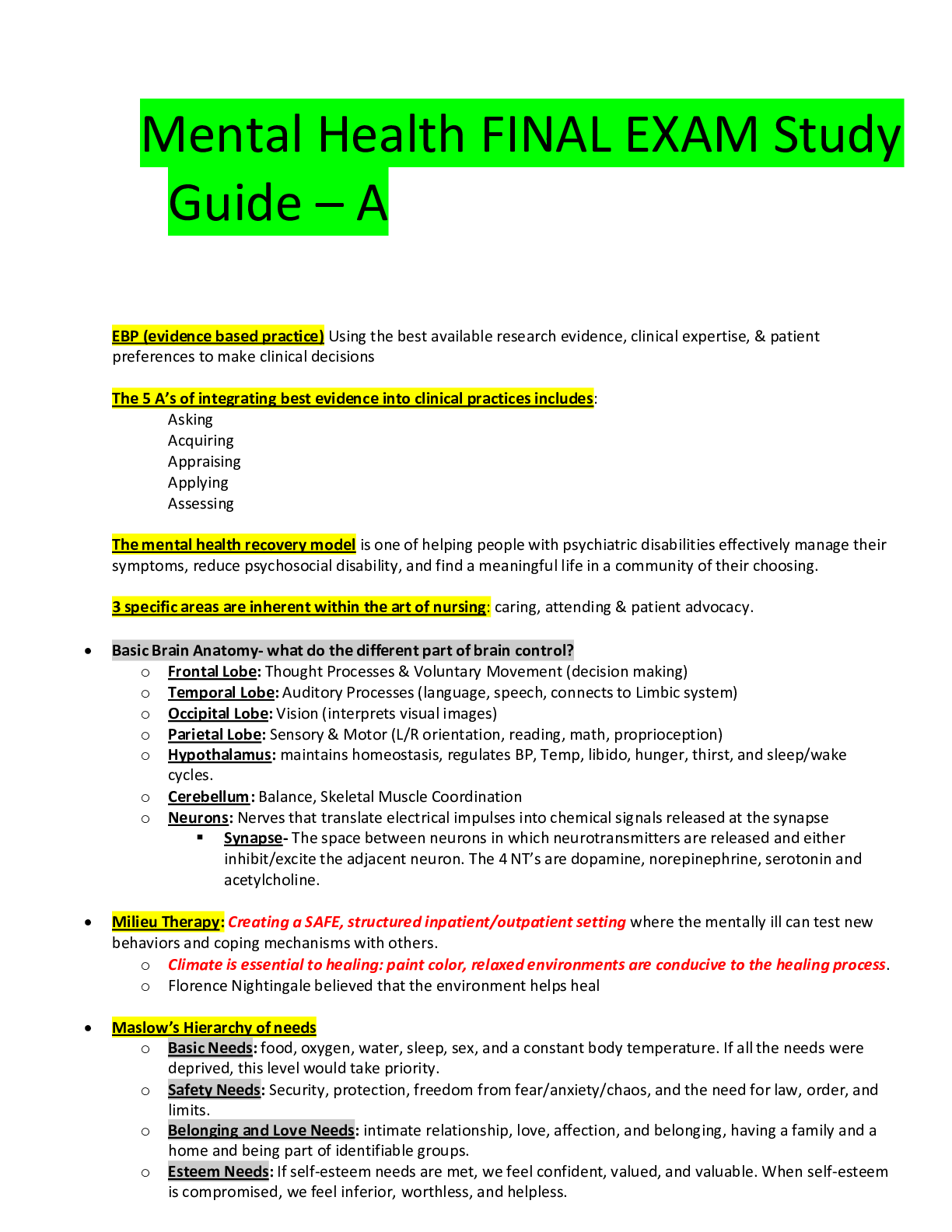

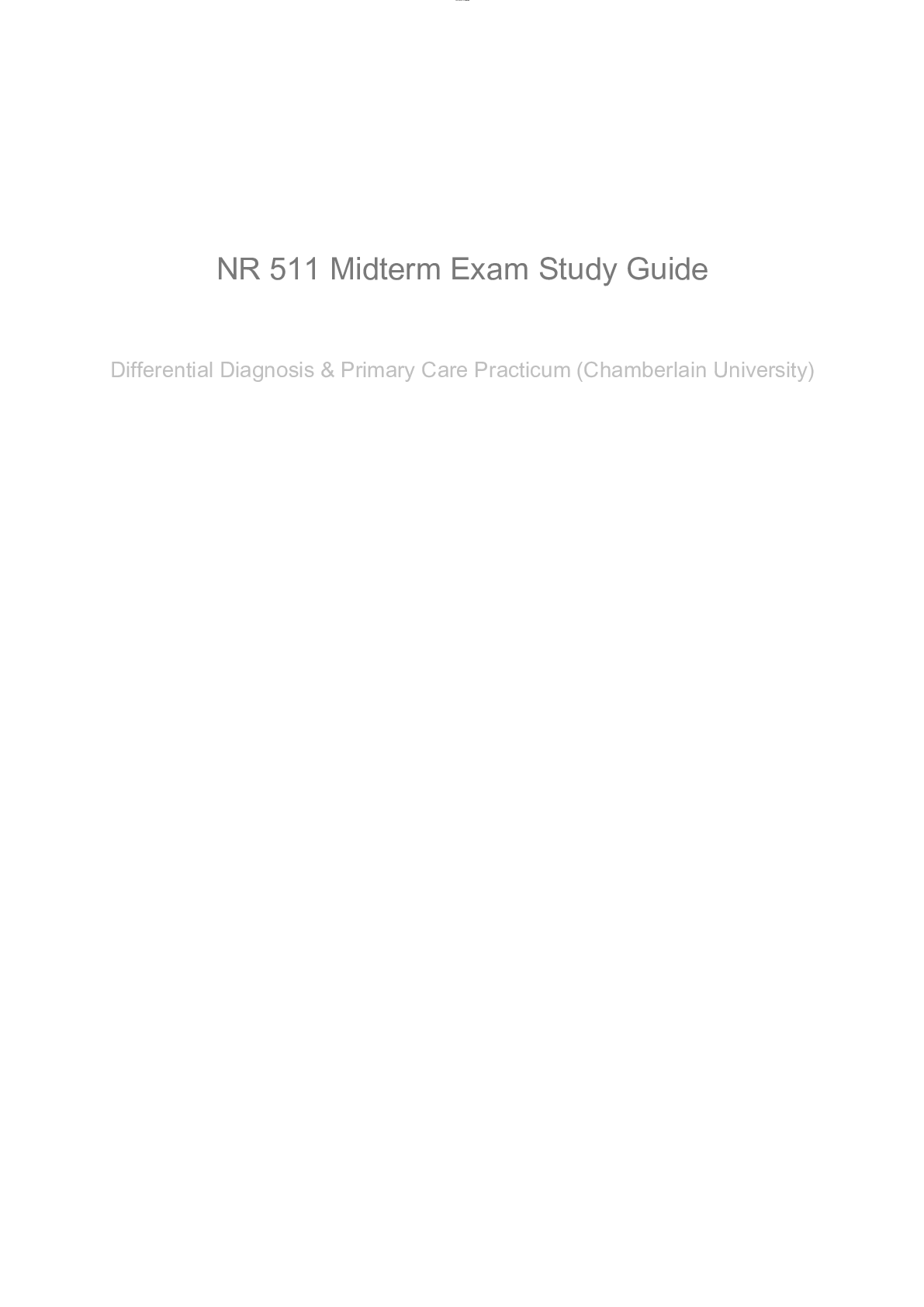


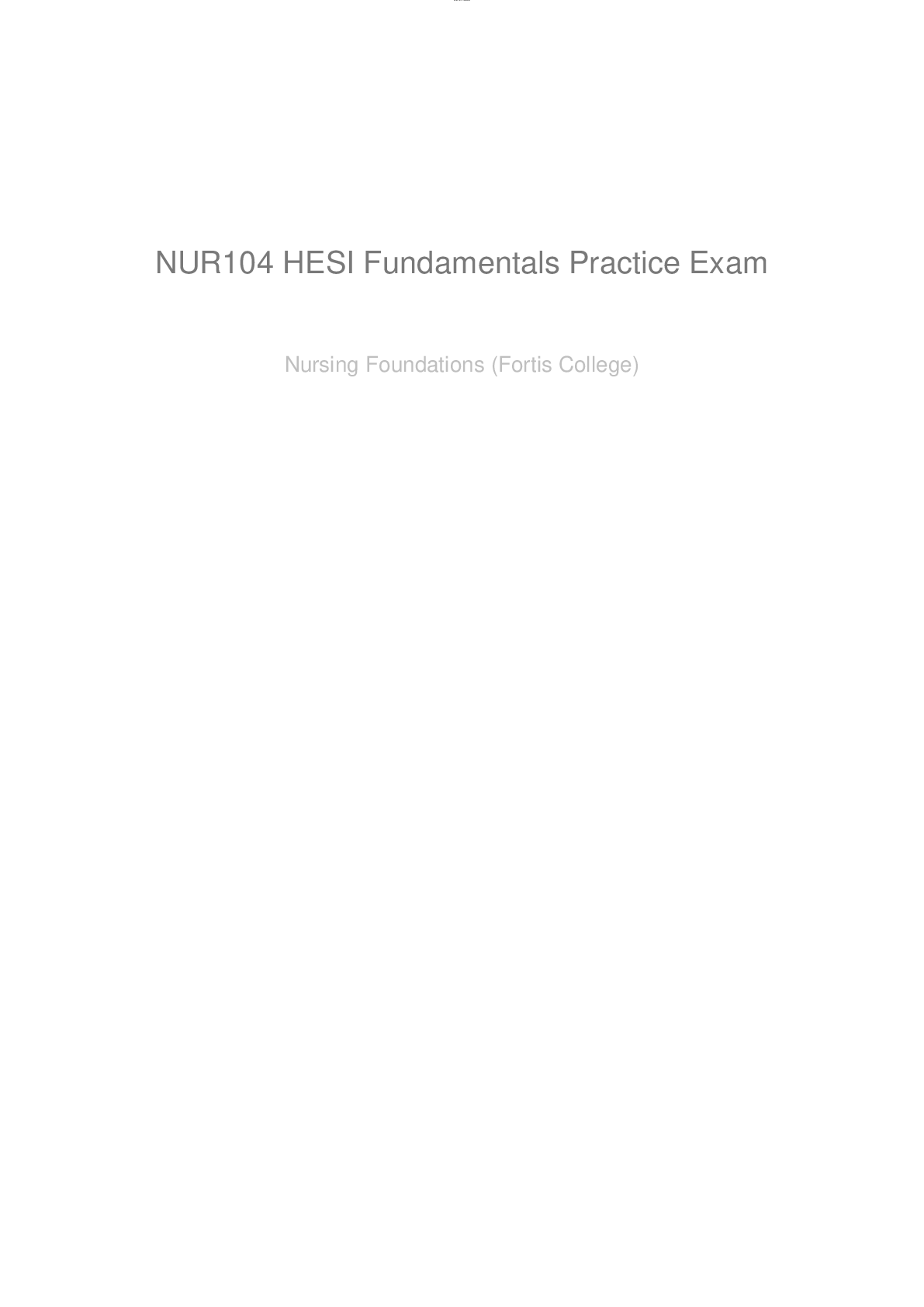
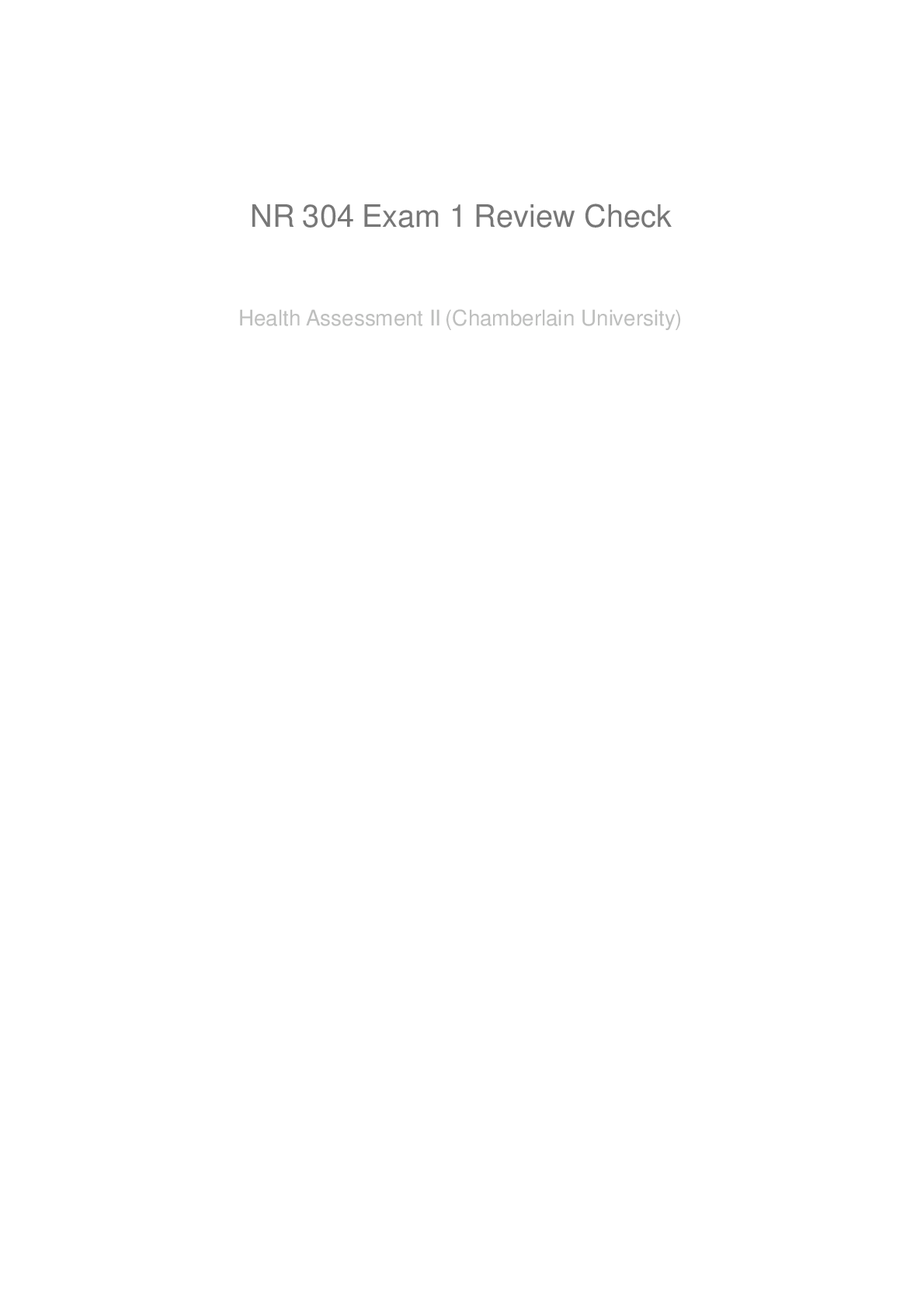

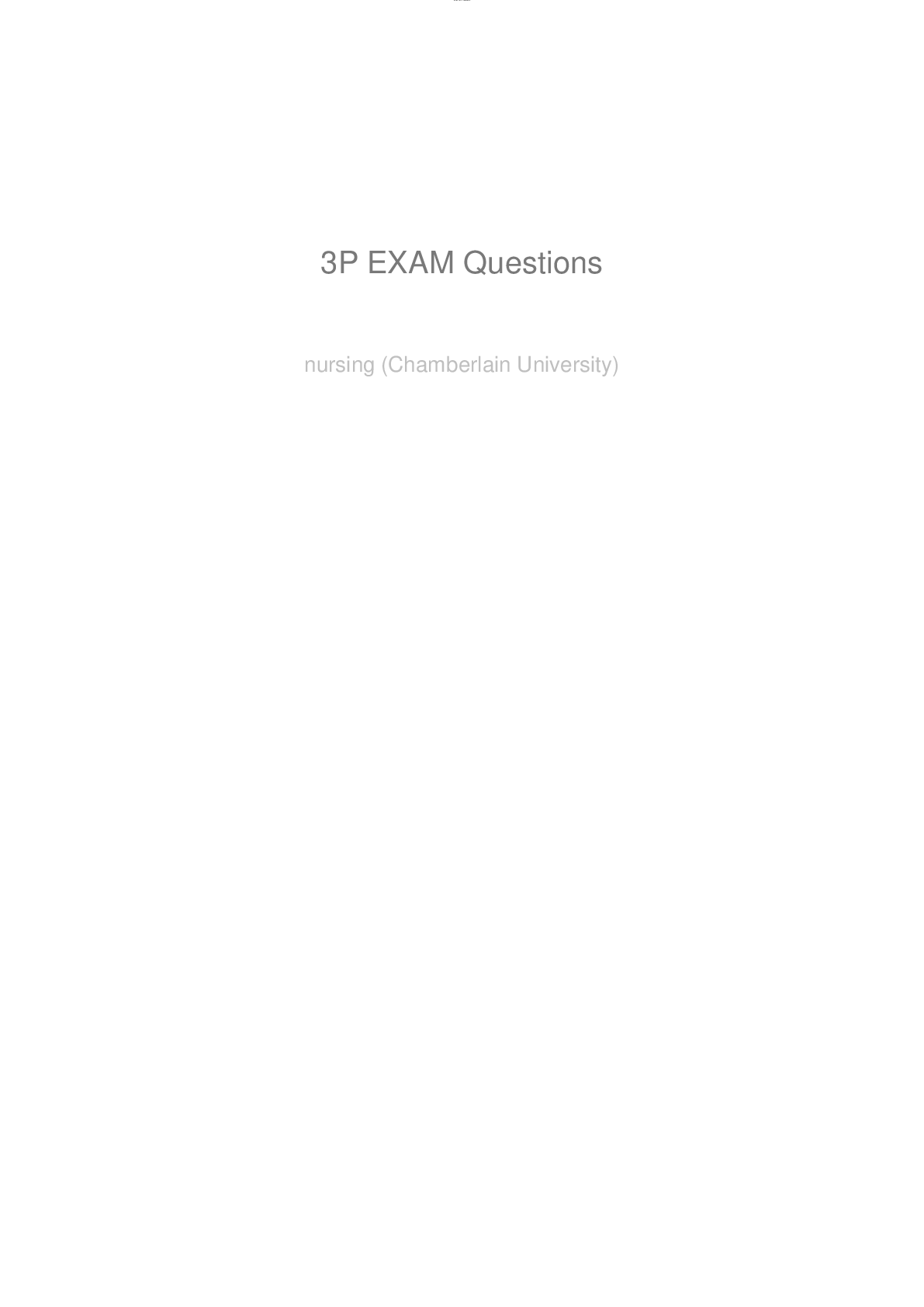
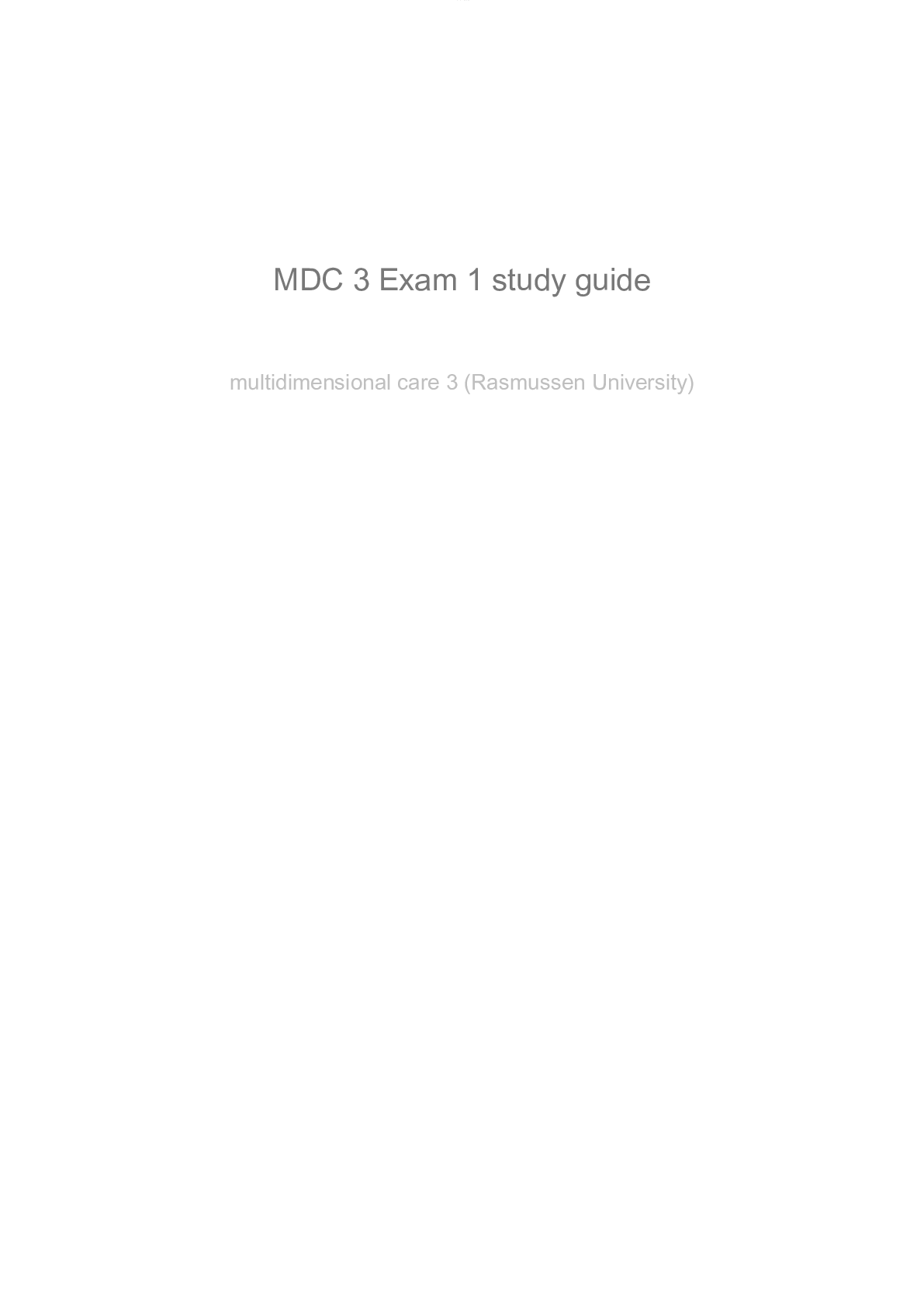





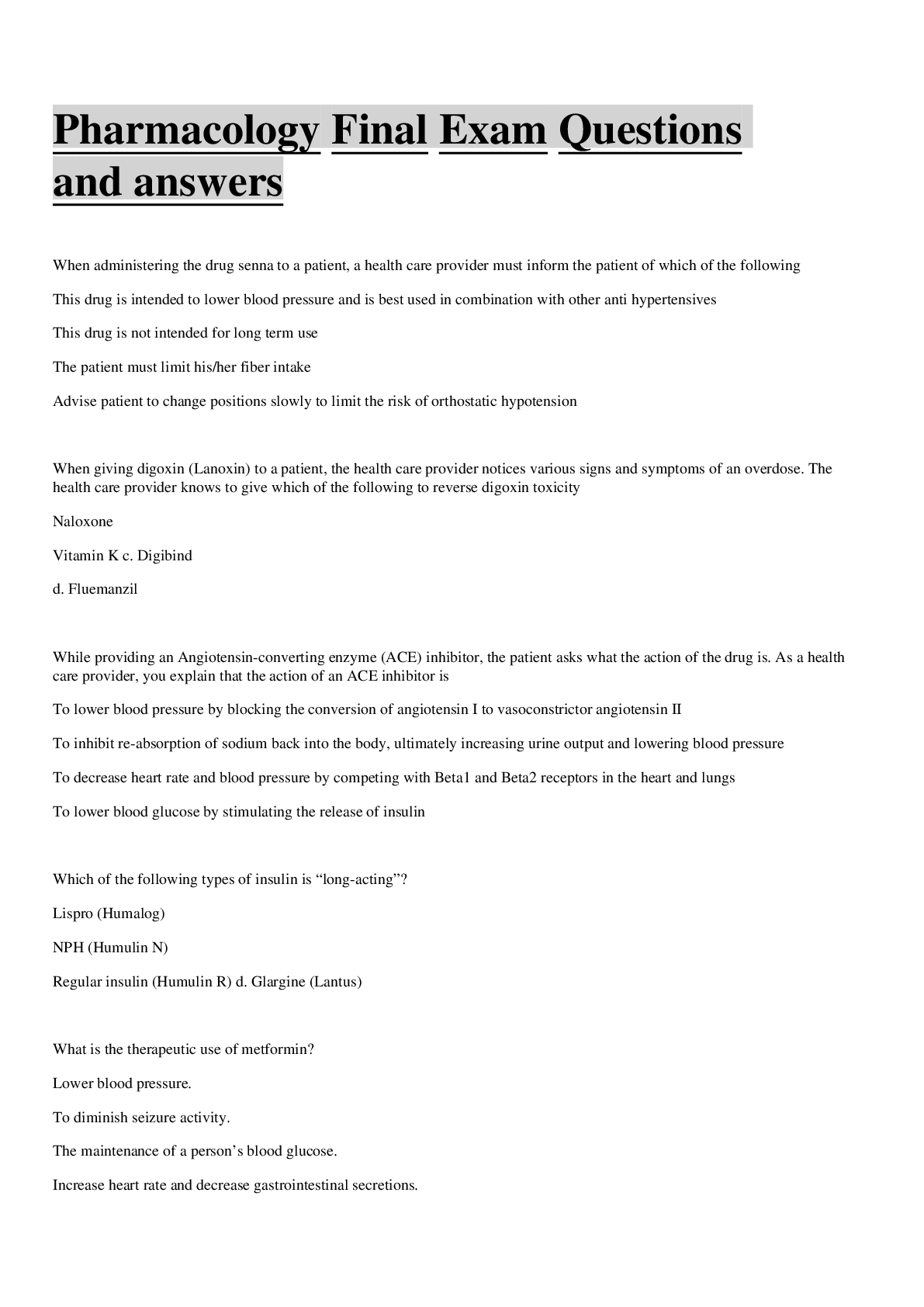
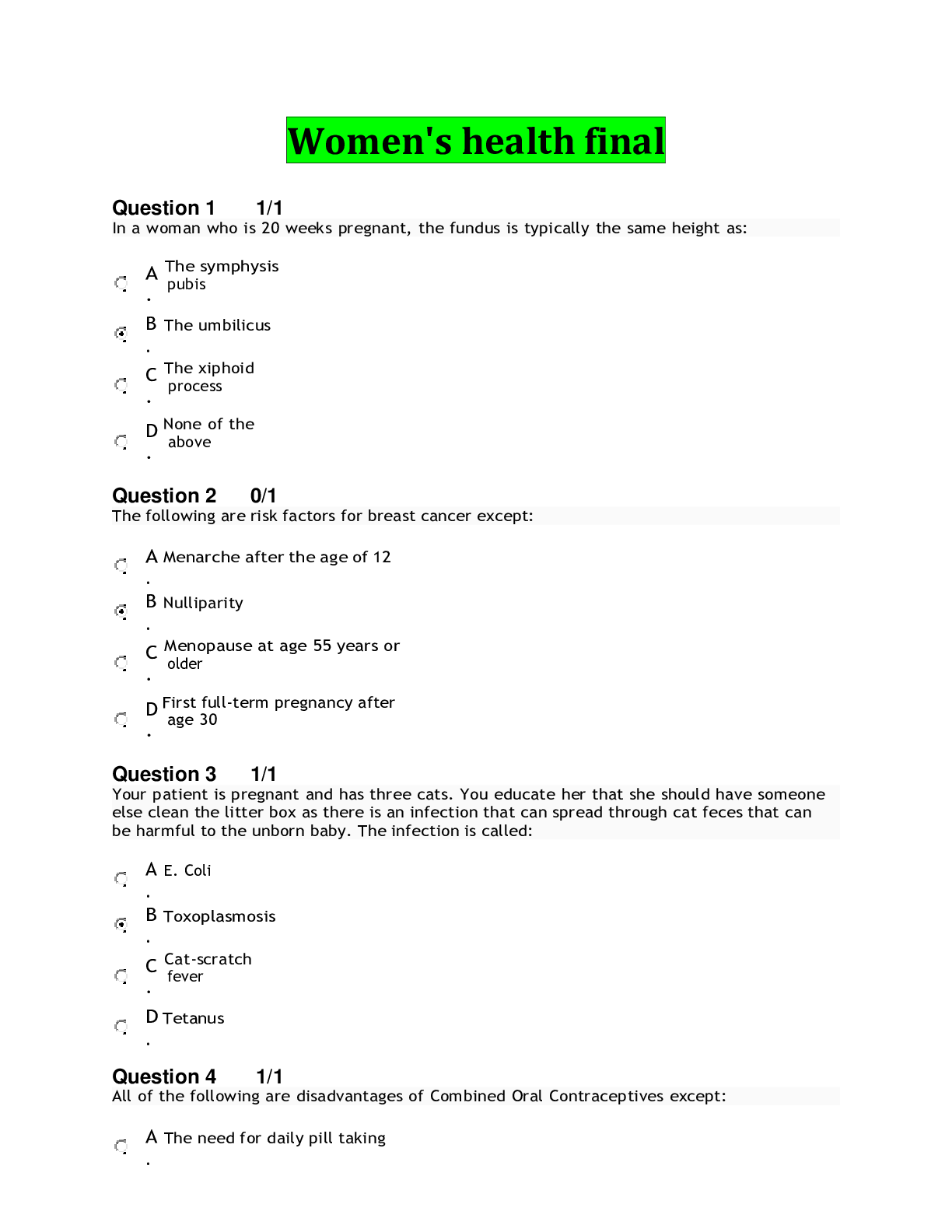

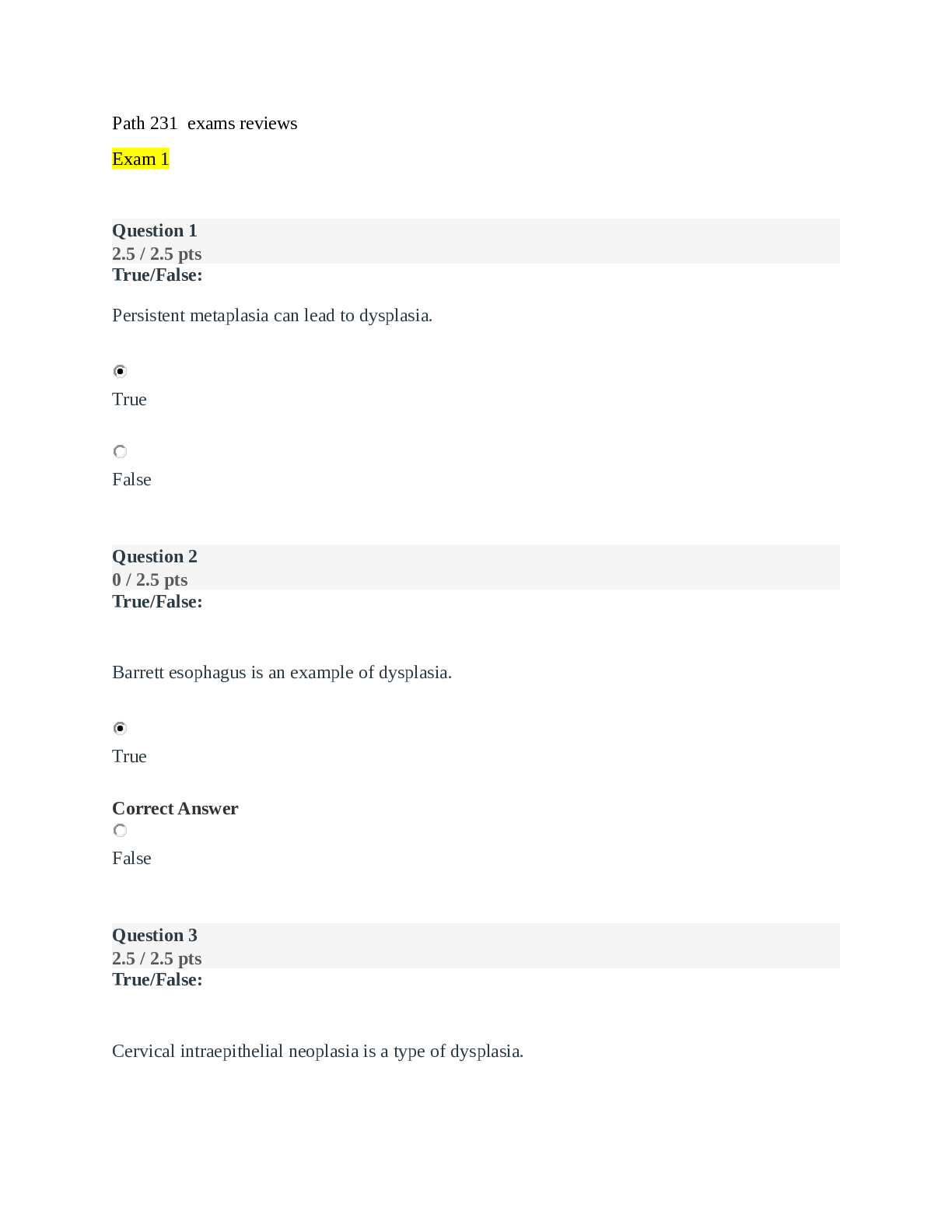

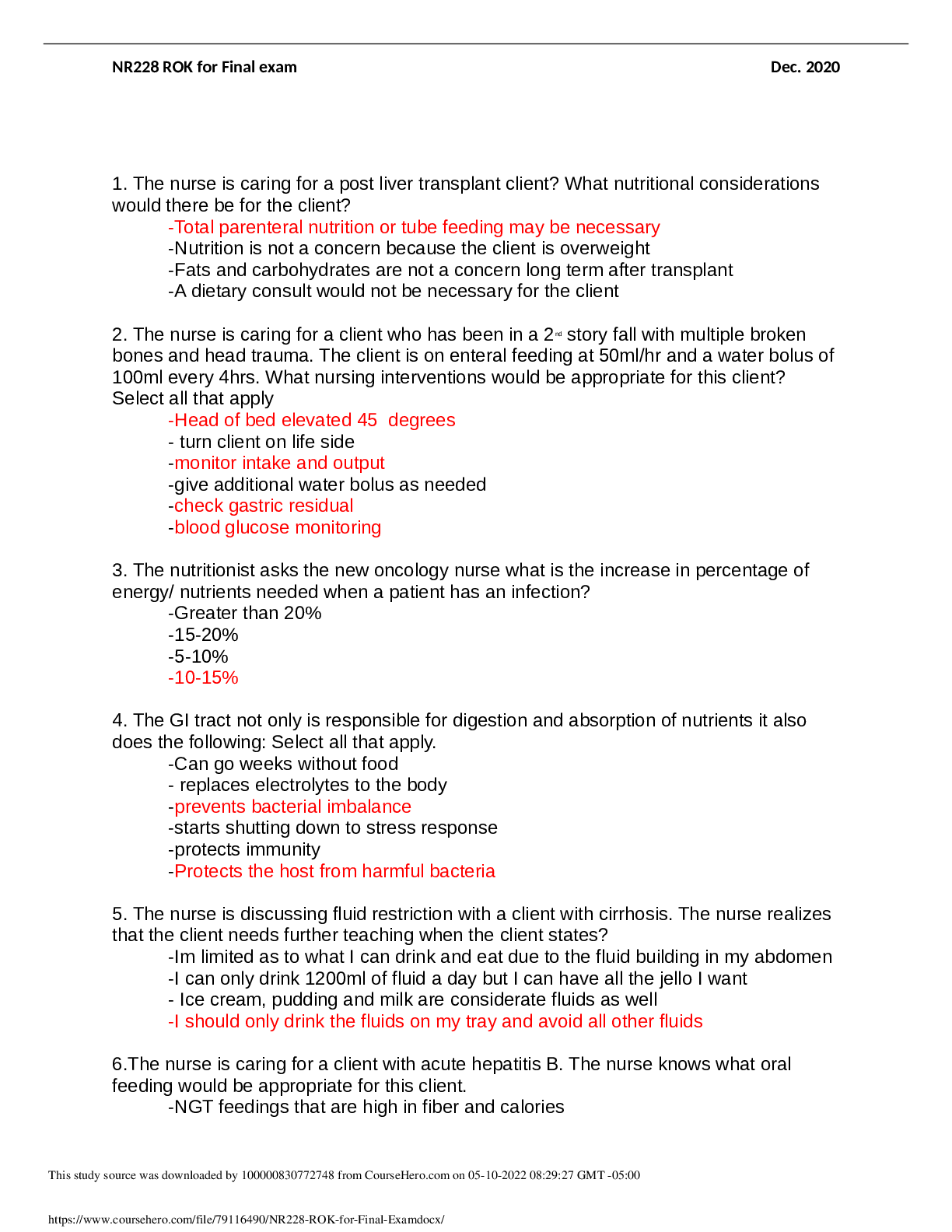

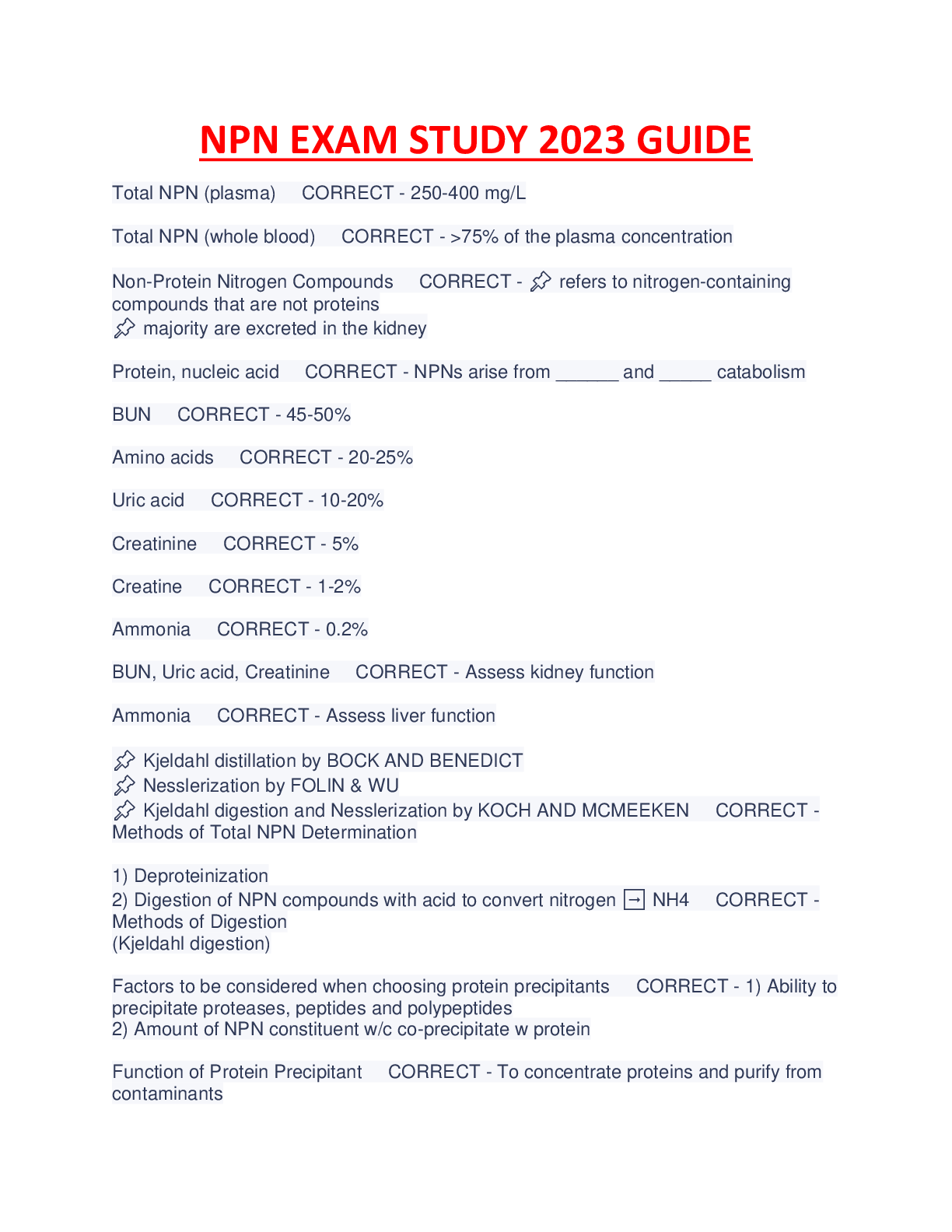
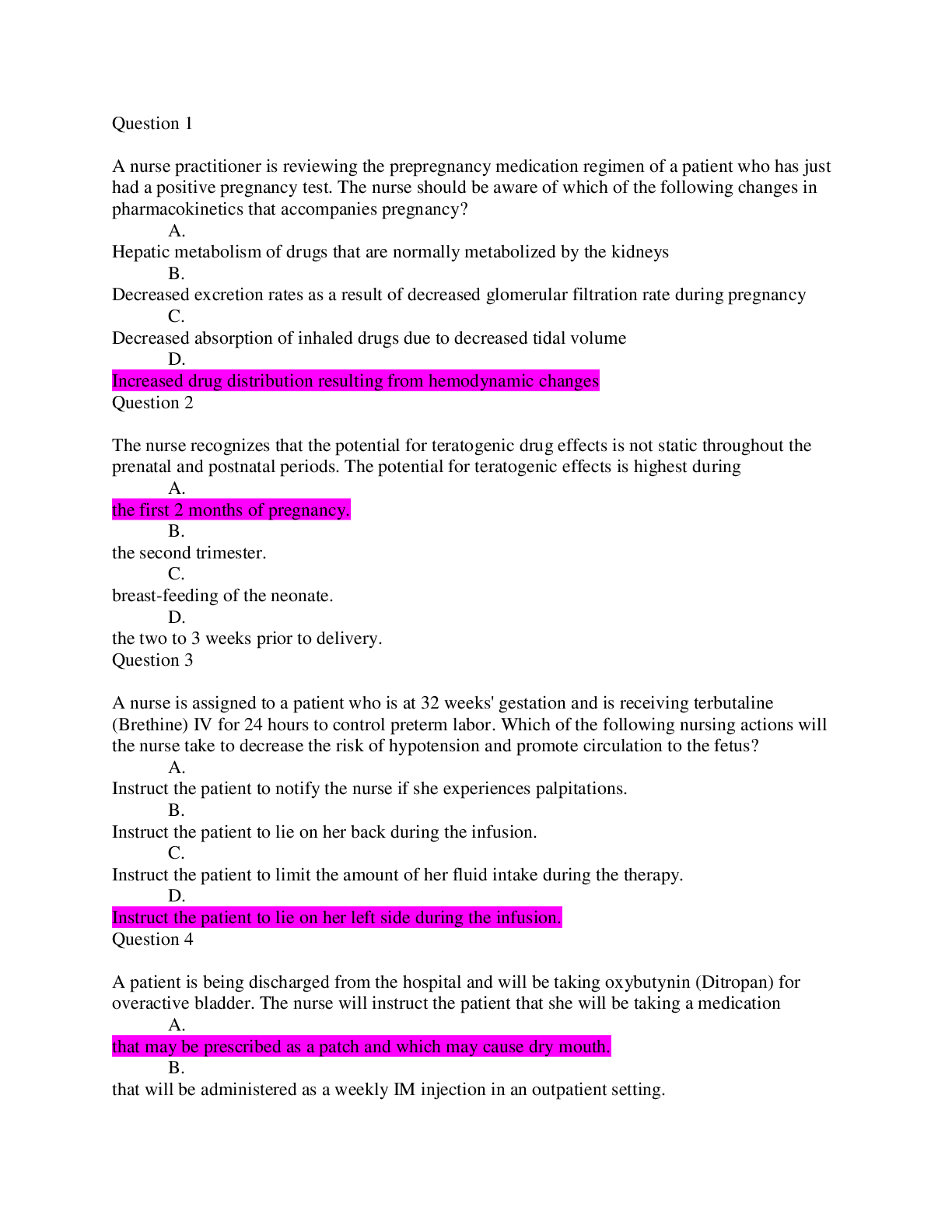
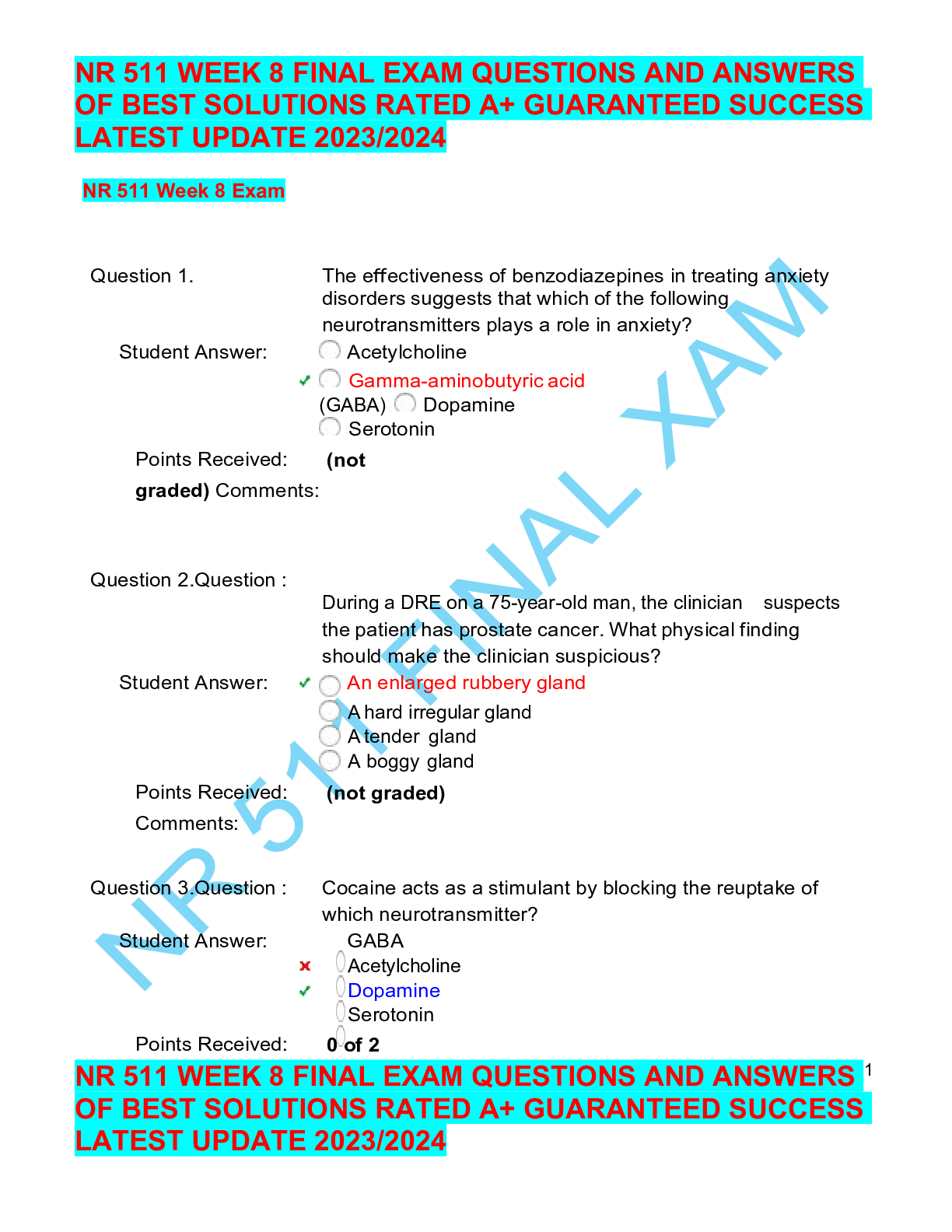

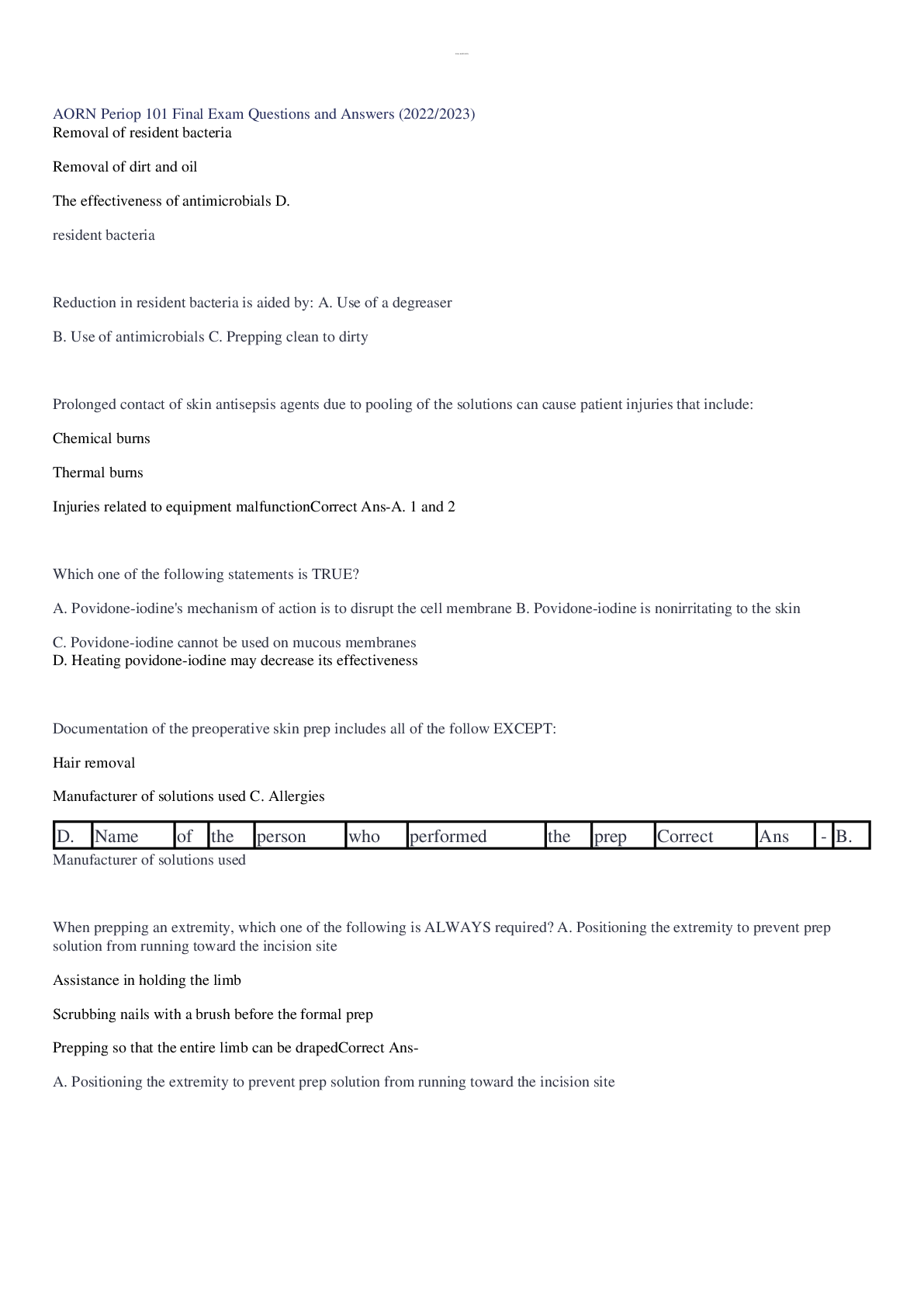
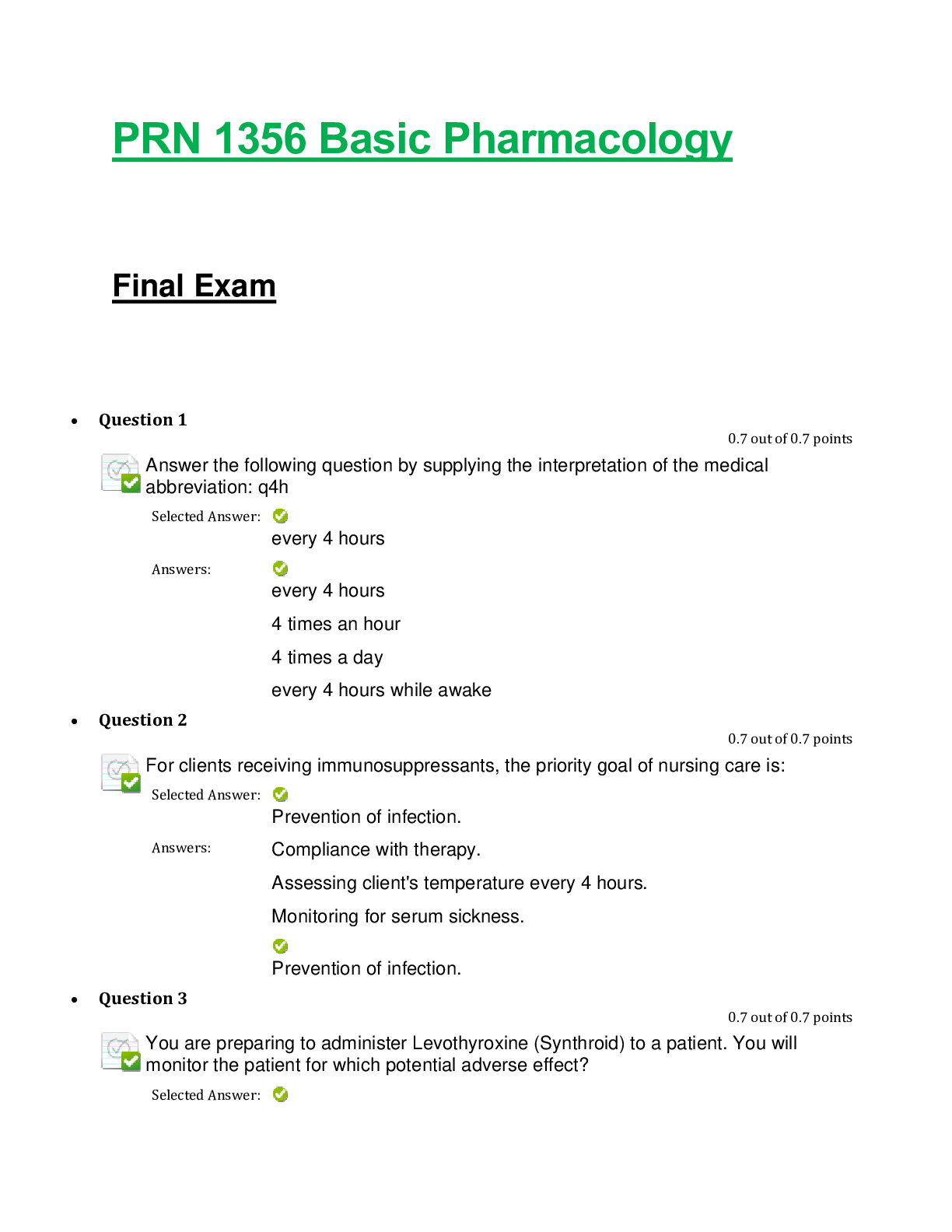
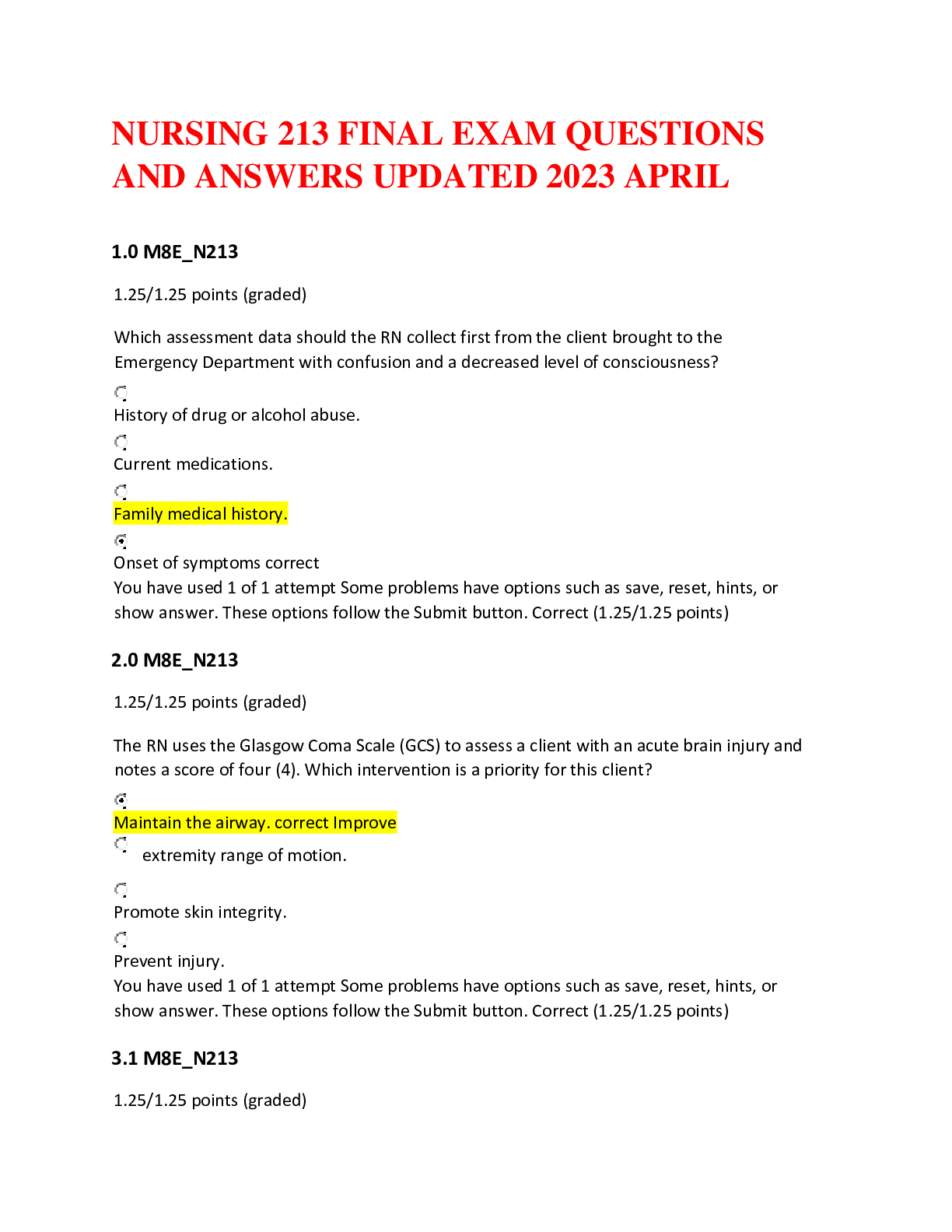
.png)
